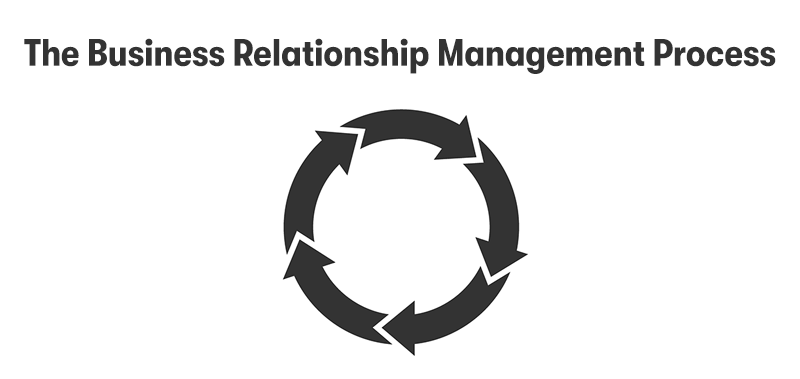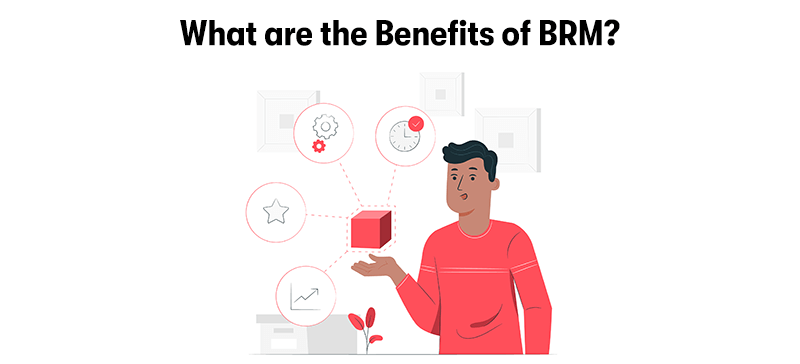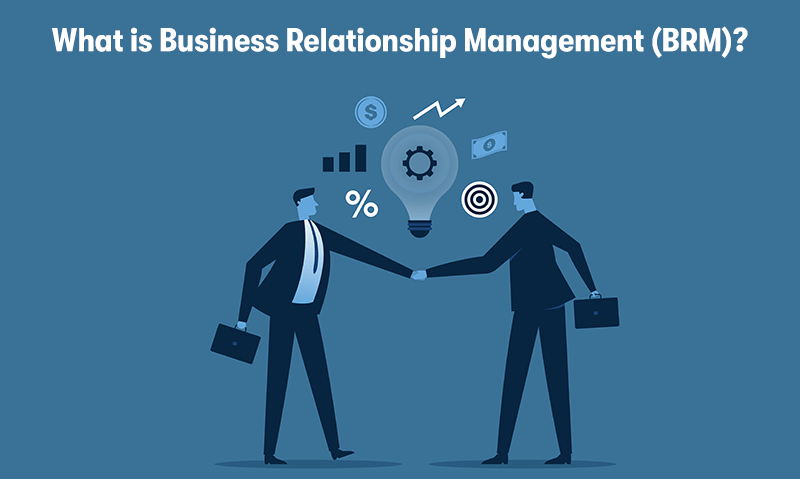What is Business Relationship Management (BRM)?
In the dynamic landscape of modern business, the alignment between technology and organisational goals is more crucial than ever. Enter Business Relationship Management (BRM), a strategic framework designed to bridge the gap between IT services and business objectives, fostering a culture of collaboration, innovation, and shared success.
At its core, BRM is about understanding and managing the relationship between service providers (often IT) and their business partners, customers, or clients. It's a discipline that emphasises the importance of strategic partnership, ensuring that technology not only supports but also drives business outcomes. As we delve into the intricacies of BRM, we'll explore its objectives, key practices, and the undeniable benefits it brings to organisations navigating the complexities of the digital age.
This introductory glance at BRM sets the stage for a deeper understanding of its role in achieving strategic alignment and fostering enduring business relationships.
What is Business Relationship Management?

Business Relationship Management is a formal approach to understanding, defining, and supporting inter-business activities related to business networking. BRM is fundamentally concerned with improving the relationship between business entities (which can be internal departments within an organisation or external partners, suppliers, and customers) and ensuring that the interactions between these business entities add value to both parties. The key objectives of Business Relationship Management include:
Aligning business IT with business objectives
BRM plays a crucial role in aligning business strategies with IT resources, ensuring that technology investments match the strategic directions and needs of the business.
Building partnerships
It focuses on building strong and strategic partnerships between an organisation and its business partners, which can include suppliers, vendors, and other external stakeholders.
Improving service delivery
By fostering better relationships and understanding between business units and IT or service providers, BRM helps in improving the quality and effectiveness of service delivery.
Facilitating change management
BRM professionals work to ensure that changes in services, processes, or technology align with business goals and are implemented smoothly without disrupting business operations.
Enhancing customer satisfaction
By understanding the needs and expectations of customers (or internal departments if focusing on internal BRM), organisations can improve products, services, and experiences, thereby enhancing overall customer satisfaction.
Optimising value realisation
BRM helps in identifying opportunities where collaboration between business entities can create additional value, ensuring that both parties benefit from their relationship.
BRM involves various roles, tools, and disciplines, including relationship management, demand management, service level management, and business value realisation. It requires strong communication, negotiation, and strategic planning skills, as BRM professionals often act as liaisons between IT and business units, ensuring that technology resources are used effectively to support business objectives.
What are the Roles and Responsibilities of a Business Relationship Manager?

The roles and responsibilities of a Business Relationship Manager are diverse and pivotal to bridging the gap between IT services and business goals. Their primary focus is to ensure that the IT department or service provider is fully aligned with the needs of the business, fostering a partnership rather than a traditional customer-service provider relationship. Here’s a detailed look at the key roles and responsibilities of a BRM:
Strategic Partnering
Act as a strategic interface between the IT department and business units for the purpose of business technology strategy development, solution discovery, service management, risk management, and relationship management.
Business-IT Alignment
Ensure that the IT services, initiatives, and strategies are fully aligned with the business objectives and priorities. This involves understanding the business processes, plans, and needs to better align IT solutions with business goals.
Demand Management
Identify, prioritise, and advocate for business needs and opportunities for improvement within the IT department. The BRM helps in managing business demands, ensuring that IT efforts are aligned with the highest business value.
Value Realisation
Monitor and measure the value that IT brings to the business, ensuring that both parties can clearly see the benefits of their collaboration. This includes defining key performance indicators (KPIs) and metrics to assess performance and value delivery.
Relationship Building
Develop and maintain strong relationships with business stakeholders and within the IT department to facilitate effective communication, collaboration, and mutual understanding of challenges and goals.
Change Management
Facilitate change management processes to ensure that changes in IT services or business processes are smoothly implemented, with minimal disruption to the business. This includes communicating changes, training users, and managing any resistance to change.
Service Management
Oversee the delivery of IT services to the business, ensuring they meet the agreed-upon standards and service levels. This involves working closely with service management teams to address any issues, improve service delivery, and ensure customer satisfaction.
Project Support
Provide support for IT projects from inception through delivery, ensuring that projects are aligned with business needs, adequately resourced, and successfully delivered. The BRM may also play a role in project governance, ensuring that projects adhere to strategic objectives.
Communication
Act as a key communication link between the business and IT, ensuring that both sides understand each other's needs, expectations, and constraints. This involves translating technical language into business terms and vice versa.
Innovation Facilitation
Identify and leverage opportunities for innovation within the business and IT. This involves staying informed about new technologies, market trends, and business practices that could benefit the organisation.
BRMs play a critical role in navigating the complex landscape of modern business and technology, ensuring that organisations can effectively leverage their IT capabilities to achieve strategic business objectives.
What Courses are Available for BRM?
ITIL 4 offers a Specialist course in Business Relationship Management (BRM). This course covers the following topics:
- The key concepts of business relationship management
- The business relationship management value streams & processes
- Business relationship management roles, skills & organisational solutions
- How information & technology supports and enables business relationship management
- The role of partners & suppliers in business relationship management
- How to develop the business relationship management capability in an organisation
Taking the ITIL 4 Specialist Business Relationship Management course offers professionals a comprehensive understanding of how to bridge the gap between IT services and business needs effectively. This training enriches participants with the knowledge and skills to foster a collaborative culture, align IT outputs with business objectives, and enhance customer satisfaction through improved service delivery.
Graduates gain the ability to co-create value, manage and meet stakeholders' expectations, and navigate the complexities of change management. By completing this course, individuals not only boost their strategic and communication capabilities but also position themselves as key facilitators of business growth and innovation within their organisations.

The Business Relationship Management Process

The Business Relationship Management process is a structured approach to developing and maintaining a productive relationship between an organisation's IT department (or any service provider) and its business units (or external partners and customers). This process aims to ensure that the IT services and projects are closely aligned with the business objectives and deliver maximum value. The BRM process can be broken down into several key phases:
1. Strategy Formulation
Understanding Business Objectives: The BRM starts by gaining a deep understanding of the organisation's strategic goals, challenges, and opportunities.
Aligning IT Strategy: Ensuring that the IT strategy supports and enhances the overall business strategy, identifying areas where technology can provide competitive advantages.
2. Demand Shaping
Identifying Needs: Collaborating with business units to identify their needs, challenges, and potential opportunities for improvement or innovation through IT solutions.
Prioritising Demands: Helping the business prioritise its IT demands based on strategic importance, value delivery, and resource availability.
3. Relationship Building and Communication
Establishing Relationships: Developing strong, trust-based relationships with key stakeholders across the business and within the IT department.
Effective Communication: Ensuring clear, open, and effective communication between IT and the business, facilitating a mutual understanding of goals, capabilities, and constraints.
4. Service Management
Service Level Agreements (SLAs): Defining and agreeing on the levels of IT service required to meet business needs, documented in SLAs.
Performance Monitoring: Regularly monitoring service delivery performance against SLAs and working on continuous improvement.
5. Value Realisation
Measuring Value: Establishing metrics and KPIs to measure the value that IT services and projects deliver to the business.
Reporting: Providing regular reports to business stakeholders on the performance, outcomes, and value realisation of IT services and initiatives.
6. Continuous Improvement
Feedback Loops: Implementing mechanisms for regular feedback from business users on IT services and projects.
Process Enhancement: Using feedback and performance data to identify areas for improvement in IT services and the BRM process itself.
7. Innovation Management
Scouting for Innovation: Keeping abreast of technological advancements and industry trends to identify opportunities for innovation within the organisation.
Innovation Implementation: Facilitating the adoption of innovative technologies and practices that can improve business processes, enhance customer satisfaction, or create new business opportunities.
The BRM process is iterative and ongoing, with a focus on fostering a partnership-oriented relationship between IT and the business. This ensures that the organisation can effectively respond to changing market conditions, business priorities, and technological advancements, thereby maintaining its competitive edge and achieving its strategic objectives.
What is Business Relationship Management in ITIL®4?

In ITIL 4, Business Relationship Management is considered a key module within the service management framework, designed to foster a positive relationship between the service provider and its customers.
ITIL 4 places a strong emphasis on the co-creation of value between service providers and service consumers, and BRM plays a crucial role in ensuring that the services offered are aligned with the needs and values of the business it serves. Here’s an overview of how Business Relationship Management is approached in ITIL 4:
Objective
The primary objective of BRM in ITIL 4 is to establish, maintain, and improve the relationship between the service provider and its customers. BRM aims to understand the customer’s needs, ensure that the service provider can meet those needs, and manage customer expectations. It's about ensuring that both parties are working together effectively to create value.
Key Activities
Identify Needs: Understand the business outcomes that customers are trying to achieve and how IT services can support these outcomes.
Shape Demand: Guide the customer in understanding the services available and how they can be used to meet their needs, potentially influencing the demand for services in alignment with the service provider's capabilities.
Service Agreement: Help assist the service level manager in the negotiation and definition of service level agreements (SLAs) and ensure that the expectations are realistic and mutually agreed upon.
Customer Satisfaction: Continuously measure and improve customer satisfaction, addressing any concerns or issues that may arise in the relationship.
Communication: Serve as the liaison between IT and the business, ensuring clear and effective communication about services, changes, and developments.
Principles
Strategic Partnership: BRM in ITIL 4 emphasises the importance of viewing the relationship with customers as a strategic partnership where both parties work together towards common goals.
Co-Creation of Value: It underlines the concept of co-creating value, suggesting that value is not just delivered by the provider to the consumer but is created collaboratively through service usage and feedback.
Continuous Improvement: There is a focus on continuous improvement of both services and relationships, ensuring that services evolve in line with changing business needs and priorities.
Role of the Business Relationship Manager
The Business Relationship Manager in ITIL 4 acts as a bridge between the service provider and its customers. They are responsible for ensuring that the provider understands the business’s needs and that the services offered align with these needs. They also work to manage expectations, communicate effectively between the two parties, and identify opportunities for improving and developing services.
In summary, Business Relationship Management in ITIL 4 is about building and maintaining a positive, productive relationship between service providers and their customers. It's centred on understanding and meeting business needs, improving service delivery, and ensuring that both the service provider and its customers are working together in a way that maximises value creation.
What are the Benefits of BRM?

Business Relationship Management offers a multitude of benefits to organisations by aligning business objectives with IT or service provider capabilities. Here are some key benefits of implementing BRM:
Improved Alignment Between IT and Business Goals
Ensures that IT strategies and services are directly aligned with business goals and priorities, leading to more effective use of technology in achieving business outcomes.
Enhances communication between IT and business units, ensuring that both sides understand each other's needs and constraints.
Enhanced Customer Satisfaction and Experience
Improves service delivery by ensuring that services meet the needs and expectations of business units or customers.
Increases customer satisfaction through proactive engagement and by addressing issues before they escalate.
Strategic Value Creation
Identifies opportunities for innovation and improvement that can deliver competitive advantage and drive business growth.
Facilitates the co-creation of value by fostering collaboration between business units and IT or service providers to develop solutions that meet business needs effectively.
Optimised Investment and Reduced Waste
Helps in prioritising investments in IT services and projects that offer the highest value to the business, ensuring optimal use of resources.
Reduces waste by identifying and eliminating services or features that do not add significant value to the business.
Better Change Management and Risk Mitigation
Improves the management of change within an organisation by ensuring that changes in IT services or business processes are aligned with business objectives and implemented smoothly.
Mitigates risks associated with IT services and projects by ensuring that potential issues are identified and addressed early.
Strengthened Relationships and Collaboration
Builds stronger relationships between IT and business units, fostering a culture of collaboration and mutual respect.
Encourages a partnership approach to IT service delivery, moving away from the traditional customer-provider dynamic to one where both parties work together towards common goals.
Increased Agility and Responsiveness
Increases the organisation's agility in responding to market changes and business opportunities by ensuring that IT can quickly adapt to new business requirements.
Enhances responsiveness to customer needs by facilitating quicker decision-making and implementation of IT solutions.
Improved Governance and Accountability
Enhances governance by ensuring that IT investments are aligned with business strategies and that there is clear accountability for outcomes.
Supports better decision-making by providing a framework for evaluating IT investments and initiatives based on their potential business impact.
Implementing BRM effectively can lead to a significant transformation in how an organisation leverages technology to support its business objectives, leading to enhanced efficiency, innovation, and competitiveness.
Final Notes on What is Business Relationship Management?
In conclusion, Business Relationship Management emerges as a pivotal strategy for fostering synergies between IT services and business objectives. It's not merely about alignment but about cultivating a partnership ethos that champions mutual understanding, strategic collaboration, and co-creation of value.
By embracing BRM, organisations unlock enhanced communication, improved service delivery, strategic value creation, optimised investments, and strengthened relationships. The ripple effects include heightened customer satisfaction, agile responsiveness to market dynamics, and robust governance structures.
As we've navigated through the essence of BRM, its roles, ITIL 4 integration, and tangible benefits, it's clear that BRM stands as a cornerstone for organisations aiming to leverage technology effectively in their quest for strategic innovation and competitive advantage.


